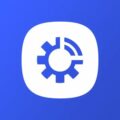30-second summary
- Facilities teams are stuck in a reactive loop: firefighting, form‑filling, and copy‑paste budgeting. AI can help you break it.
- Start with the non‑negotiables: unified data and reporting, failure‑forecasting & condition‑based upkeep, and workflow automation.
- Then augment people: voice‑to‑notes, assistants, conversational interfaces, usage‑driven space & service planning, and tighter supplier collaboration.
- Keep an eye on the horizon: digital twins, extended reality, and autonomous systems.
- The common thread: make people, processes, and data work as one.
The crisis behind the dashboards
Facilities leaders quietly face a perfect storm.
Ageing workforces, rising complexity, and relentless pressure to do more with less mean many teams are still trapped in the reactive loop.
Emergencies set your agenda, admin drains your day, and last year’s spreadsheet sets budgets. That model doesn’t scale and certainly doesn’t attract the next generation of talent.
The way out is a strategic shift to foresight‑driven operations. Think less whack‑a‑mole, more chess. Although AI is not a silver bullet, it is the engine that turns your data exhaust into practical decisions and timely action.
Tier 1 — The must‑haves (where impact starts this year)
These are the foundations. Nail them and you’ll feel the benefit within quarters, not years.
Unified data & reporting
If your maintenance logs, building controls, energy meters, and supplier updates live in different places, you don’t have insight; you have trivia. A shared data core turns dispersed facts into accountability and action.
Work orders that route themselves based on skills, location, and severity. Schedules that flex in real time when conditions change, not next month. Automatic nudges, updates, and close‑out checks that cut the back‑and‑forth.
Infraspeak’s automation engine lets you design unique rules—millions of possible combinations—to match your operation, not the other way around.
Tier 2 — Tactical augmentation (make people faster, safer, happier)
These aren’t optional forever, but are the natural next steps once your foundation is solid.
Workforce enablement & upskilling
Have you got your hands full? Use voice memos to capture notes.
Is a junior tech on a complex job? Give them guided checklists and instant context.
The goal is simple: keep knowledge in the team and the team in flow.
Conversational tooling
From creating procedures to answering “what’s the latest on AHU‑3?”, conversational interfaces cut the distance between a question and an answer. Done right, they reduce busywork and increase consistency.
Usage‑driven space & services
Cleaning, HVAC, and security based on actual occupancy instead of guesses. Analyse utilisation trends and retune routines to match reality. Fewer wasted hours, better experiences.
Collaboration and supplier oversight
Disconnected parties cause delays. A shared workspace for customers, contractors, and internal teams, complete with performance tracking — keeps everyone aligned and accountable.
Infraspeak brings field notes, chat, guided flows, and supplier collaboration into the same platform, so context is never lost between systems.
Tier 3 — Strategic innovation (pilot now, scale when ready)
These are the big swings. They demand the data foundation above, but they’re already proving their worth in targeted pilots.
Digital twins
Virtual replicas that mirror your buildings in real time so that you can test changes safely and measure the impact before you touch the physical world.
Extended reality for assist & training
Head‑mounted displays that surface manuals, live points from BMS, and step‑by‑step guidance; perfect for remote support and faster onboarding.
Autonomous systems
Drones and mobile platforms that handle risky, repetitive inspections or precision cleaning. Better safety, better coverage, better data.
Adoption playbook
A bold move doesn’t have to be a blind one. Here’s a practical glide path.
Map the mess: list your systems, spreadsheets, and shadow processes, then pinpoint the data gaps and hand‑offs where work stalls.
Pick two metrics: uptime and cost avoidance; energy and comfort; compliance and SLA attainment. Choose your north star now and commit to it.
Start with a thin slice: one site, one asset class, one supplier group. Prove the loop: detect → decide → act → learn.
Automate the boring bits: interventions, quote requests, supplier management. If a step is repeatable, it’s automatable.
Scale the wins: roll out by pattern. Where the data and outcomes match, expand with confidence.
Invest in people: train for new workflows and celebrate fewer callouts as loudly as you once celebrated heroics.
